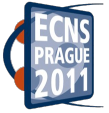Nuclear analytical methods
Nuclear analytical methods
Nuclear analytic methods have been developed and extensively used in The Department of Nuclear Physics (Academy of Science of Czech republic) since the early 60s of last century. In particular, neutron activating analysis and prompt methods of analysis with charged particles beam and beam of neutrons was handled. During the past period several analytic methods were innovated, practical experience of their application was obtained and collaboration with many Czech and foreign scientific enterprises and organizations was set.
The beam of the accelerated ions is applied for the surface modification of solids and for the analysis of their composition and structure. These methods have several unique characteristics which couldn't be substituted for other alternative approaches. In the Department of Nuclear Physics AS CR (UJF) we use Van de Graaff electrostatic accelerator on these purposes. In the last 10 years several equipments for analytical methods were assembled, such as: PIXE, RBS, ERDA, PIGE, NRM. Group of Nuclear Analytic Methods systematically partake in the study of synthesizing, structure and properties of advanced materials for microelectronic, optic, optoelectronic, cryogenic and materials with exclusive properties (microhardness, chemical resistance, biocompatibility, etc.). Surface structures and systems prepared in cooperation with Czech and foreign institutes by different methods (epitaxial grow, Czochralsky's method, ion implantation, deposition of plasma polymer, CVD, PCVD, magnetron sputtering, etc.) are analyzed in our laboratory with different analytical methods.




